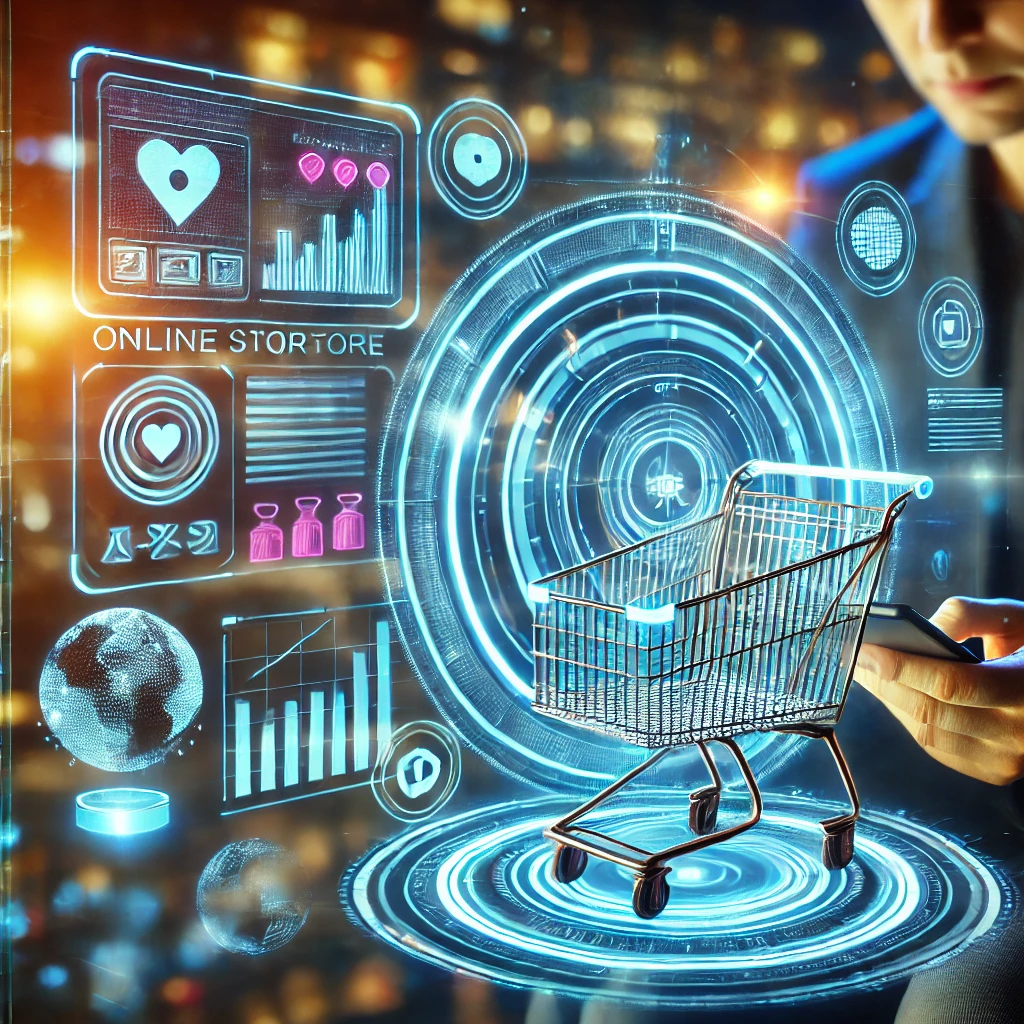E-commerce: The Future of Online Shopping, and Business Opportunities
E-commerce
Introduction
E-commerce, or electronic commerce, refers to the buying and selling of goods and services online. It has revolutionized the way businesses operate and how consumers shop, offering convenience, speed, and accessibility like never before. From online marketplaces like Amazon and eBay to small independent stores, e-commerce has become an essential part of the global economy.
With advancements in AI, mobile commerce, and digital payments, the e-commerce industry continues to grow rapidly, providing businesses with endless opportunities to reach customers worldwide. Whether you’re a shopper looking for the best deals or an entrepreneur starting an online business, e-commerce is shaping the future of retail and commerce.
E-commerce has completely transformed how businesses operate and how consumers shop. In today’s fast-paced digital world, people prefer shopping from their smartphones rather than visiting physical stores. With the rise of artificial intelligence (AI), social commerce, and digital payment systems, e-commerce is evolving at an unprecedented rate.
1. The Growth of E-commerce: Why Online Shopping is the Future
The global e-commerce industry has exploded in the last decade and shows no signs of slowing down.
📊 Key E-commerce Growth Statistics:
Global e-commerce sales hit $5.9 trillion in 2023 and are expected to exceed $8 trillion by 2027.
Over 60% of consumers now prefer shopping online instead of visiting physical stores.
Mobile commerce (m-commerce) makes up over 70% of all e-commerce sales.
By 2030, it’s predicted that 95% of all purchases will happen online.
This rapid growth is driven by
digital transformation, shifting consumer behavior, and the rise of AI-powered shopping experiences.

Why is E-commerce Growing So Fast?
🔹 Convenience – Consumers can shop from anywhere, anytime.
🔹 Better Prices & Discounts – Online stores often offer lower prices than brick-and-mortar shops.
🔹 Personalized Shopping Experience – AI-driven product recommendations make online shopping more enjoyable.
🔹 Fast & Easy Payments – Digital wallets, one-click checkouts, and “Buy Now, Pay Later” options make purchasing effortless.
2. Top E-commerce Trends Shaping the Industry in 2025
To stay ahead in the competitive world of e-commerce, businesses must embrace the latest trends. Here are the most important developments shaping online shopping in 2025:
🔹 AI and Machine Learning in E-commerce
AI is revolutionizing e-commerce by personalizing customer experiences, automating tasks, and improving product recommendations.
📌 How AI is Changing Online Shopping:
✔ Chatbots & Virtual Assistants – AI-powered bots provide 24/7 customer support and answer queries instantly.
.✔ Personalized Recommendations – AI analyzes customer behavior to suggest products they’re likely to buy.
.✔ Voice Search Optimization – More consumers are using voice assistants (Alexa, Siri, Google Assistant) to shop online.
🔹 Social Commerce: Shopping on Instagram, TikTok & Facebook
Social media is no longer just for entertainment—it’s now a major e-commerce platform.
🔴 What is Social Commerce?
Social commerce refers to buying and selling directly through social media platforms like Instagram, TikTok, Facebook, and Pinterest.
📌 Why is Social Commerce Growing?
✔ Short-form videos and influencer marketing drive higher engagement.
✔ User-generated content (UGC) increases trust and sales.
🛒 Example: Brands like Nike and Sephora are leveraging TikTok and Instagram’s shopping features to sell products directly through social media

🔹 Sustainability in E-commerce: Green Shopping is the Future
Consumers today care about sustainability. Eco-friendly shopping is a rising trend in the e-commerce industry.
📌 Sustainability Trends in E-commerce:
✔ Eco-friendly packaging – Reducing plastic waste in shipping.
✔ Carbon-neutral shipping – Companies offset carbon emissions.
✔ Sustainable products – Consumers prefer brands with ethical sourcing.
🌱 Example: Amazon launched its “Climate Pledge Friendly” label to help consumers find sustainable products easily.
🔹 Augmented Reality (AR) Shopping Experience
AR technology is making online shopping more interactive and engaging.
📌 How AR is Used in E-commerce:
✔ Virtual Try-Ons – Shoppers can see how clothes, makeup, or glasses look on them.
✔ 3D Product Previews – Furniture and home decor brands offer AR previews before buying.
🛒 Example: IKEA’s AR app allows customers to visualize furniture in their homes before purchasing.

3. Biggest Challenges Facing the E-commerce Industry
While e-commerce is growing, it also faces major challenges:
✅ Cybersecurity Risks – Online fraud and data breaches are increasing.
✅ Supply Chain Disruptions – Global shipping delays impact order fulfillment.
✅ Competition with Market Giants – Small businesses struggle against Amazon and Alibaba.
✅ High Customer Expectations – Consumers demand fast shipping and personalized experiences.
Businesses must adapt quickly and find innovative solutions to stay competitive.
4. E-commerce Opportunities: How to Succeed in Online Business
If you’re looking to start an e-commerce business, there are plenty of opportunities:
📌 Profitable E-commerce Business Ideas:
✔ Dropshipping – Sell products without holding inventory.
✔ Subscription Box Services – Monthly deliveries for niche markets (e.g., beauty boxes
✔ Print-on-Demand (POD) – Sell custom T-shirts, mugs, and posters.
✔ Digital Products – E-books, online courses, and templates.
The key to success is choosing a profitable niche and leveraging SEO, social media marketing, and AI automation.
5. How to Start a Successful E-commerce Business (Step-by-Step Guide)
Want to launch your own e-commerce store? Follow these steps:
✔ Step 1: Choose a Niche – Focus on a profitable market with demand.
Step 2: Pick the Right E-commerce Platform – Shopify, WooCommerce, BigCommerce, or Wix.
✔ Step 3: Build a High-Converting Website – Optimize for speed, mobile-friendliness, and SEO.
Step 4: Add Payment Gateways – Offer multiple payment options (PayPal, Stripe, Apple Pay).
✔ Step 5: Use SEO to Rank on Google – Optimize product pages, write blog content, and use keywords.
✔ Step 6: Market Your Store – Leverage social media, email marketing, and Google Ads.
✔ Step 7: Optimize Customer Experience – Offer fast shipping and excellent support.
Pro Tip: Focus on content marketing and influencer partnerships to drive traffic and sales.

Conclusion: The Future of E-commerce is Here
E-commerce is booming, and businesses that adapt to new technologies will dominate the market. AI, social commerce, AR, and sustainability are the biggest trends shaping online shopping in 2025.
🔹 Want to start your own e-commerce business? The time is now!
🔹 Already running an online store? Stay ahead by leveraging SEO, AI, and social media marketing.
💬 What do you think about the future of e-commerce? Share your thoughts in the comments!
